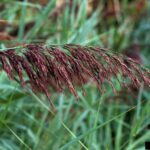Description:
Monitoring
Biological monitoring is performed by volunteers in Mullett Creek each spring and fall as part of the Watershed Council’s Volunteer Stream Monitoring (VSM) Program.
Other Threats to Water Quality
- Nonpoint Source Pollution
- Eroding riverbanks
- Agriculture
- Road/stream crossings
- Residential development
Additional Resources:
Mullett Lake Area Preservation Society (MAPS)
The purpose of MAPS is to represent the best interests of its members toward the pursuit of practical lake management to protect and preserve the material character and water quality of Mullett Lake and its surrounding watershed.
Information about Threatened, Endangered, and Special Concern species in this stream’s watershed is available on the Michigan Natural Features Inventory (MNFI) website.
Discharge data for this stream is available online through the Michigan Department of Environmental Quality’s Low Flow Discharge Data Base.
USGS Current Water Data for Michigan provides stream flow conditions.
A wide variety of maps, including Vegetation circa 1800, National Wetlands Inventory, Land Cover Change 1800’s to 1978, Wetland Change 1800’s to 1980, and many other resources for this area are available online in the Michigan Natural Features Inventory (MNFI) Data Resources page.
Learn about safely eating fish from this river in the Michigan Fish Consumption Advisory.
| Title | Link |
|---|
Insert Mullett Creek Map


